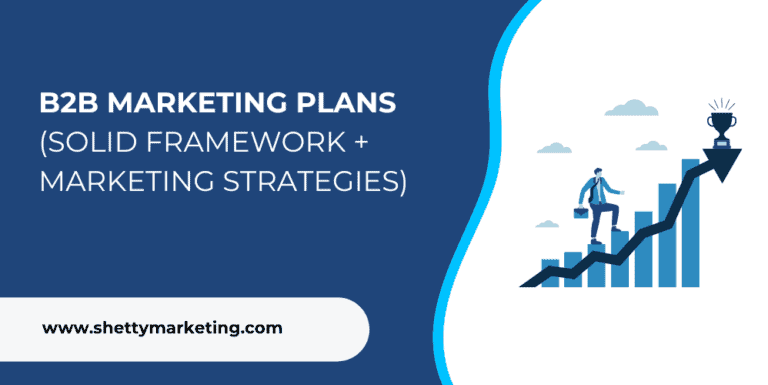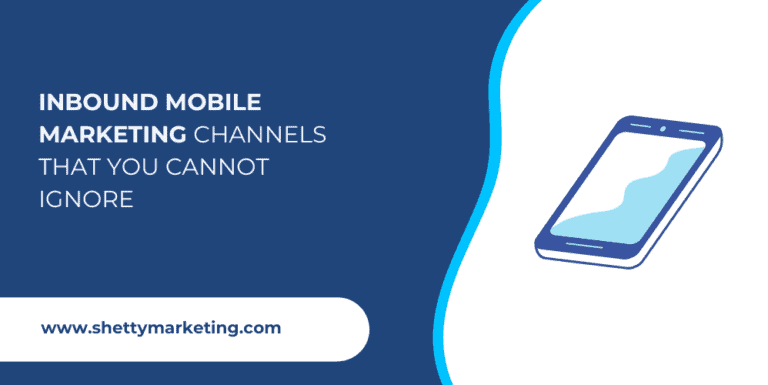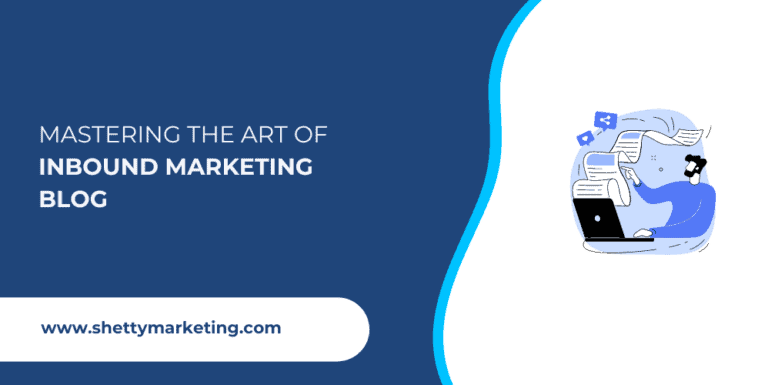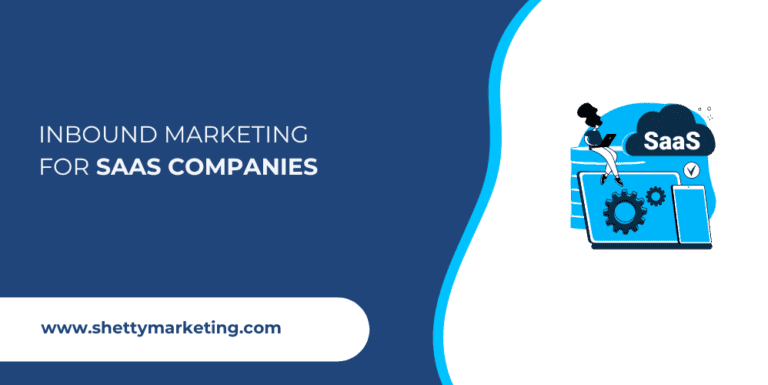Most business owners market to other businesses with the same approach; Promoting their products or services to all industries with a one-size-fits-all message.
While this method is not wrong, it doesn’t help your business stand out.
A good B2B marketing plan should follow a process that involves listing potential companies, filtering out profitable segments, and tailoring the marketing message for each segment.
Curious to learn more about this process? Allow me to offer some effective marketing strategies I’ve learned from my industry experience as you start your B2B marketing journey
Understand your USP for effective B2B marketing
It all begins by understanding your offering.
Take a step back and ask yourself, what makes your offer unique?
Is it that only you offer motorized standing desk converters to companies or is it your ability to effortlessly handle inbound marketing channels for a law firm?
Whatever it is, use this simple template to get a better understanding of your offer.
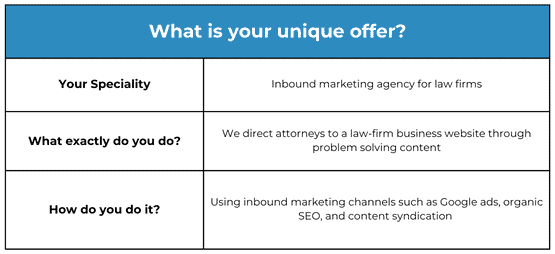
So, you’ve figured out what your unique offering is.
Great!
Now, find a list of potential prospects in that niche who can benefit from your unique offering instead of reaching out to everyone.
This way, you are not casting your net far and wide in hopes of hitting the jackpot.
You are hitting the nail on the head by targeting that one area where you know you’ll strike gold!
Finding the right target audience
To find the right target audience, put together a list of potential prospects from the niche you are good at and then pick the most profitable segments.
To compile a list of prospects, you can either run lead generation campaigns or take a shortcut and get a list from Bombora or ZoomInfo.
If you want to learn more about lead generation, I have written a separate blog on that, do check it out :
How are leads generated (Leverage the power of lead magnets)
Generate Leads for your Business: 3-Step Lead Gen Process
After you’ve prepared your list, it’s a good idea to split your leads into various segments. That way, you can identify lucrative segments that can benefit your business.
Returning to the example of an inbound marketing agency for law firms, you can develop detailed account segmentation criteria to identify the most profitable segments.
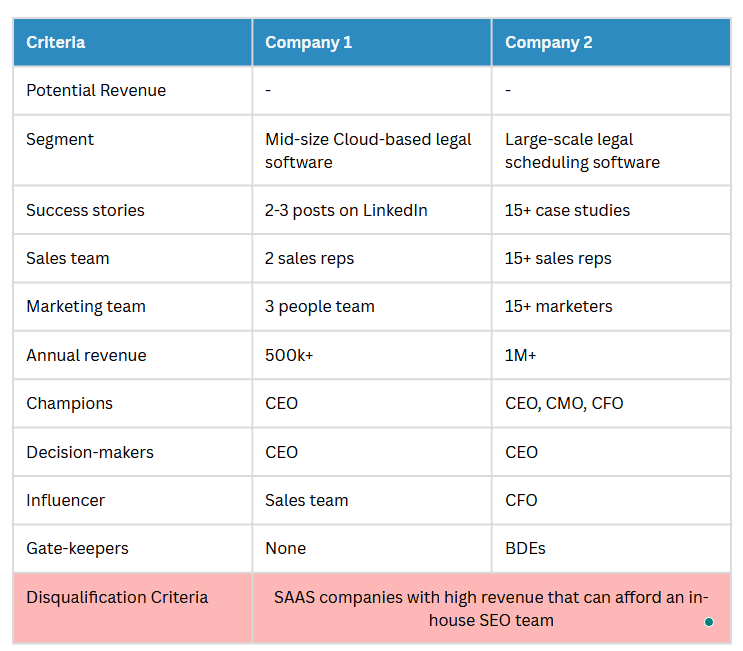
When you take a glance at the table above, it’s pretty evident that Company 1 would be the ideal segment for your offering.
They are a mid-sized company with a small team, and I think it’s worth noting that they don’t have a gatekeeper. From my perspective, this could be a great opportunity for you to explore.
I suggest digging up more companies that meet the same criteria so you can zero in on a profitable segment.
LinkedIn ads + List (An epic marketing plan to find more companies in a segment)
You can use LinkedIn’s Matched Audience feature to market your offerings to more contacts who belong to the profitable segment.
This amazing feature creates a predictive audience from the contact list you provide, enabling you to reach out to an audience with similar characteristics.
To use this feature, navigate to your LinkedIn ad account. Click on the “Plan” tab which is located on the left side of your ad account. Once you do that, you should see the “Audience” option, which allows you to submit your lists. Follow the walkthrough GIF below for more clarity.
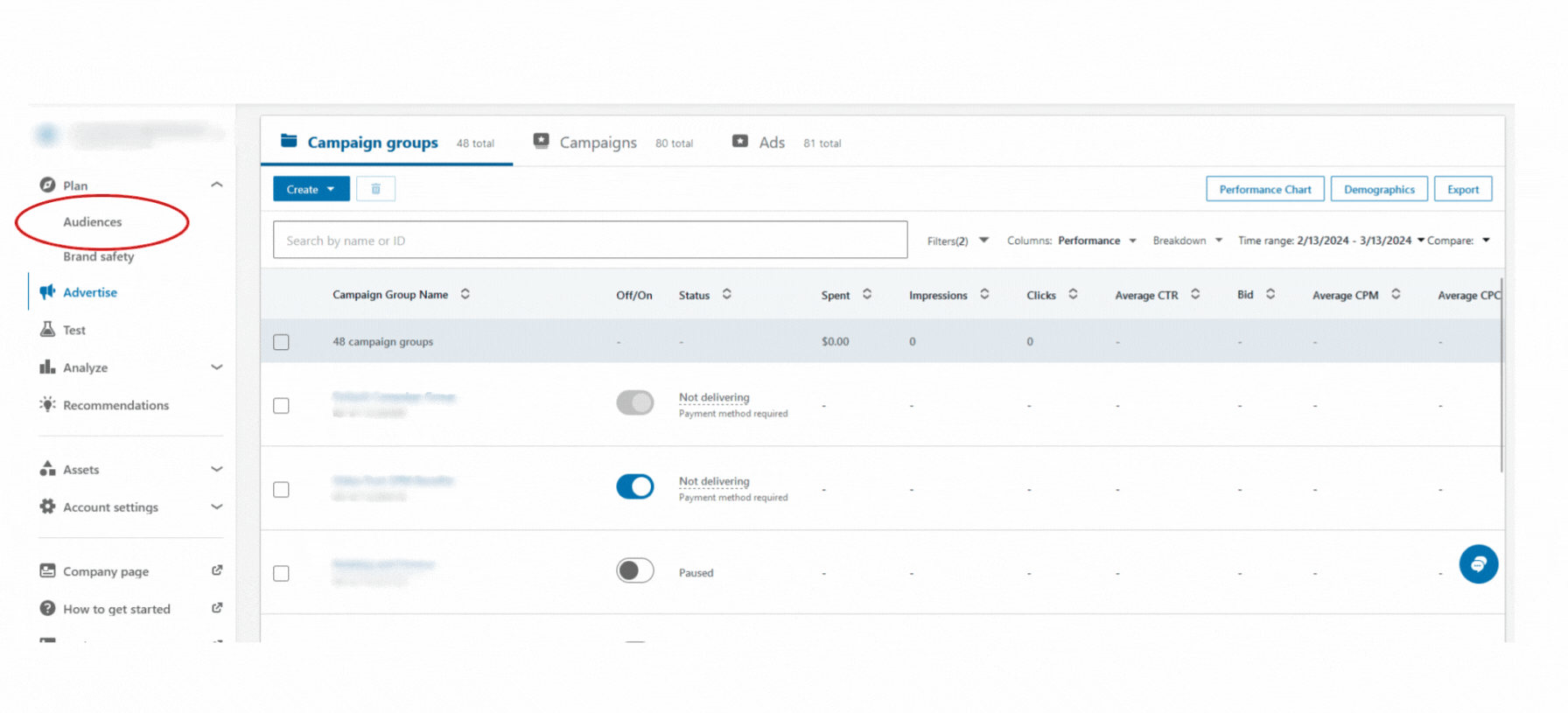
Just a heads up, there’s no guarantee that LinkedIn will be able to find all the contacts you upload on Matched Audience. Some people may use a separate email for their LinkedIn profile.
However, make sure to complete the LinkedIn template without any empty columns.
The more information you provide, the higher the likelihood that LinkedIn will be able to identify all the contacts you’ve added. The app will also consider additional details such as the company name, country, and more to locate your potential connection on LinkedIn.
In fact, you can find this information in the “Match rate” metric. As you can see, the contacts we uploaded had a matching rate of 90%.
Now, the next step should be targeting the list with the right copy!
Get the attention of your business customers with the right message
To really connect with your audience and get them to take action, it’s important to understand what they’re going through and what they want to achieve.
So, the next step would be to tailor your message and communication strategy specifically to the needs and pain points of that particular segment.
The best way to understand their needs & pain points is by talking to them, brainstorming ideas, and doing some secondary research.
For brainstorming, you can use something called the empathy map to list down the thoughts that run across prospects’ minds when making the purchasing decision. Write down what they hear, what they see, and what they say or do during the buying process.

You can incorporate their thoughts into your messaging. Prospects will easily connect with your copy, bringing you one step closer to your final goal.
After identifying the profitable segments and refining your messaging, the next step is to elevate your marketing strategies.
It’s time to go full throttle and make it happen!
B2B Marketing Strategies ( with the latest B2B marketing trends)
It’s surprising to know that most businesses are still sticking to marketing tactics from way back in 2011. Now, I’m not saying that these tactics are entirely irrelevant, but let’s face it, some of them just don’t cut it anymore.
For example, sharing posts on Facebook in the hopes of getting organic traction or stuffing keywords on web pages to gain visibility – these strategies simply don’t work in today’s landscape.
But don’t worry, there are other tactics that can get you better results. I’ll be diving into them in more detail.
1. Personalized videos ( with an epic marketing tool)
Personalized videos are the best way to promote tailored content to lucrative segments.
Utilizing digital marketing tools such as Sendspark allows you to address your audience’s needs and concerns through personalized video messages, creating a stronger connection with potential buyers.
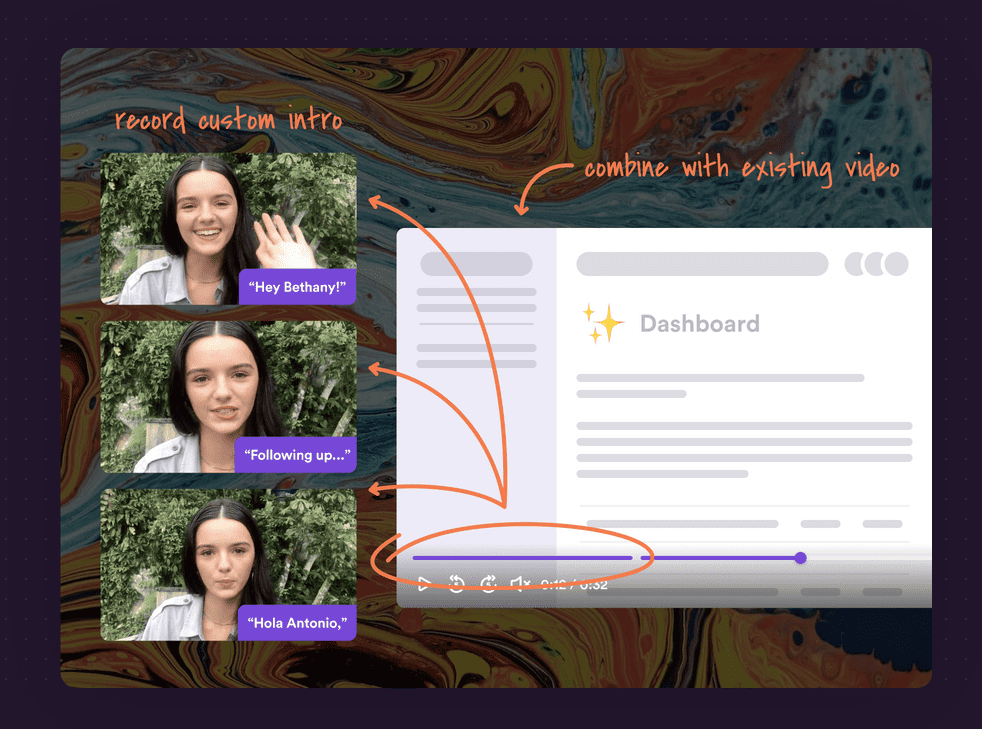
Using Sendspark, you can record a custom intro to every prospect and then combine it with the rest of the video which has the main subject matter.
For example, let’s say you’re targeting a bunch of law firms. You could create a personalized video that explains how your marketing efforts can promote their product and services to potential customers.
Let’s say you are offering SEO services, you may be more precise in the video by describing how you can find the most suitable keyword terms for their target market and how you can assist them in optimizing their web page for those keywords.
By going into detail, you are directly addressing the prospect’s needs and showing them that you have the expertise to help them achieve their goals.
2. Segment-specific social proof
For marketing success, it’s important to establish credibility and trust through social proof.
You can do that by sharing case studies or success stories of your current customers with potential buyers. Trust me, it is more effective than sharing some random vanity KPIs that no one cares about.
But here’s a tip to take it up a notch: when you’re targeting specific segments, mention current clients you work with who are in the same industry as your prospects.
By doing this, you can show that you have relevant expertise and experience in their field.
Plus, it helps establish a connection with the segment, which can increase your chances of making a sale. So don’t be afraid to name-drop your clients in your personalized marketing messages.
3. LinkedIn messages
Reaching out to your target audience with customized messages is a smart approach to building connections.
However, it’s vital not to come across as overly aggressive or sales-focused.
Most importantly, relying on automation to connect with multiple accounts on LinkedIn is a bad practice. LinkedIn users can spot an automated message from a mile away. The generic style gives it away.
The best way to initiate a conversation with a prospect on LinkedIn is through ego-feeding them. First, engage with their posts and then compliment their content personally via messages. Try to keep it as natural as possible.
This is a common strategy most B2B marketers are following these days. It might be time-consuming, but resorting to automation would not get you any replies.
That being said, there are other ways to make use of automation tools aside from bombarding LinkedIn users with spam messages?
Thanks to the rise of AI, companies & advertisers have the opportunity to incorporate AI into their social media marketing campaigns. If you’re interested, I have a whole separate post about this topic. Feel free to give it a read!
Read more: How AI is used in marketing (Will it replace marketers?)
Remember, start with small talk and gradually make your way to your product or service. If you’re looking for a way to show your appreciation for your target audience, take the time to engage with their LinkedIn posts.
This can help to establish trust and make them more likely to consider what you have to offer.
4. Influencer marketing (Content marketing through influencers)
B2B marketing can be tricky because often prospects aren’t aware of the solutions available to their problems.
Many companies try to solve this problem by sharing posts on their LinkedIn company pages, but unfortunately, these posts often don’t get the exposure they need.
Why is that?
Because LinkedIn company pages don’t have the same organic reach as personal profiles.
So, what’s the solution?
I usually recommend building authority through valuable comments and posts on your personal profile. This takes time, but if you want a quick win, influencer marketing is the way to go.
You can reach out to micro-influencers in your niche who have already built a following. The legit ones have your target market, and you can market to them through the influencer.
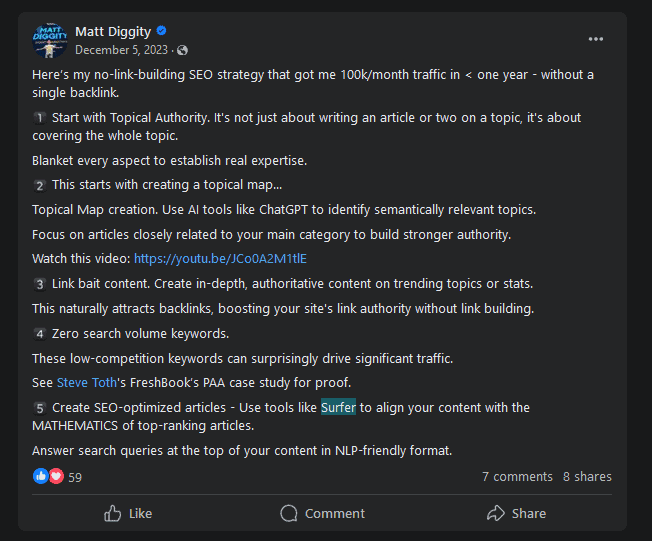
Above you see a snapshot of a post where Matt Diggity, a well-known SEO expert, promotes Surfer SEO, an AI-powered SEO tool.
He was able to influence many SEO experts in the industry into using it for AI content creation, SEO optimization, and so on.
You can do the same in your space.
It’s not only cost-effective, but it also gets you better results than paid marketing.
Related: Average marketing cost for a small business: What should be your marketing budget?
So, consider using influencer marketing to boost your B2B marketing efforts.
How do you do business-to-business marketing? (Using one of the best B2B marketing channels – Organic Search)
The right way to do business-business marketing is by creating content for the solution seekers and selling services to them after consistent nurturing campaigns.
It might seem like a no-brainer, but too many businesses fall into the trap of promoting their product without considering how it actually solves the problems of their customers.
But it’s not just about the content itself. You also need to think about how people will actually find it.
If you’re not familiar with SEO, you might be missing out on a lot of visibility. That’s why it’s important to do your research and find out what people are searching for when they’re looking for solutions in your industry.
Once you have a good idea of what questions your target audience is asking, start creating content that answers those questions. Use keyword research tools to find out what words and phrases people are using, and make sure you’re targeting those terms in your content.
By creating helpful, informative content that addresses the needs of your target audience, you’ll start to build trust and establish yourself as an authority in your industry. This is where lead magnets come in – things like free e-books, webinars, or consultations that you can offer in exchange for someone’s contact information.
Once you have those leads, it’s important to nurture them with personalized messaging that speaks to their specific needs and interests. Segment your audience based on the criteria and customize your messaging accordingly.
In short, the key to successful business-to-business marketing is to create content that’s actually helpful and informative, and then nurture those leads until they’re ready to buy.
Read more: What is a Good Content Strategy
B2B Marketing Examples
Leadfeeder, a SaaS client of Grow and Convert agency, had some doubts about the agency’s B2B content marketing strategy and its ability to generate long-term traffic.
Initially, the agency’s strategy focused on top-of-funnel (TOFU) stories for brand awareness without purchase intent. However, the CEO wasn’t sure if this approach was sustainable in the long run.
Fortunately, the agency discovered Pain Point SEO posts, which had 10 times higher conversion rates than TOFU stories.
By prioritizing bottom-of-funnel, high-buying intent keywords, the agency was able to generate a better ROI on its content marketing efforts. Comparison and list-based posts with high purchase intent performed better in conversions than story-based posts.
Leadfeeder’s process includes heavy user research and asking about alternative options, resulting in successful comparison and list-based posts.
The agency created seven content creation frameworks for high purchase intent blog posts: comparison, category tools, how-to, alternatives, product use cases, stories, and case studies.
The shift in strategy led to an increase in search volume, and content marketing efforts alone generated signups for Leadfeeder.
Pain point SEO posts implemented in the spring and summer of 2018 resulted in an increase in signups per month. The time delay for conversion increase was due to posts taking time to rank and get traffic.
However, there was a linear increase in conversions for over a year after December. The steady monthly conversion increase from pain point SEO posts is extremely rare.
The initial dip in overall traffic to blog posts was due to difficulty promoting pain point SEO content in communities, as it is intended for Google, not casual browsing on social media. Immediate traffic from communities was useful for getting the post in front of people and accelerating linking and Google ranking.
Paid Facebook promotion and link building proved a winning combination for every client. Ad spend came from the company’s budget, not the clients’. The company tested cold audiences, lookalikes, and retargeting visitors for initial traffic.
Link building through a partner agency improved rankings and conversion potential. Pain point SEO posts gained both early and long-term traffic from Facebook and organic search.
Working with Leadfeeder taught the company to shift content and promotion strategy and measure success with leads. Testing, iterating, and focusing on what works is necessary for results.
Pain point SEO is the main strategy for SaaS companies, accelerating traffic and leads for multiple clients.
Fortify Software’s Innovative B2B Marketing Strategy: Creating a Non-Existent Country Called Hackistan
One of the innovative marketing strategies for B2B is from Fortify Software.
They ran a campaign that lasted for a year and had ads in all the marketing channels. The campaign continued through to the RSA trade show, where they had a main campaign landing page called discoverhackistan.com.
Fortify Software, a security software company, came up with a brilliant idea to create a non-existent country called Hackistan, where all the hackers lived.
The website was designed like a tourism bureau or an educational institution website. You could either go on a touristic path or sign up for classes on hacking.
Their print and digital ads had a Hackistan map with different sections for the dark web, social security numbers, cyber attacks, and more. On the website, you could explore each “city” and meet the natives, aka the hackers.
At the trade show, the president of the country was walking around hyping up “Visit Hackistan.” The ads and web experience were funny and memorable.
You could see them everywhere! It was super cool for an otherwise boring tech niche.

